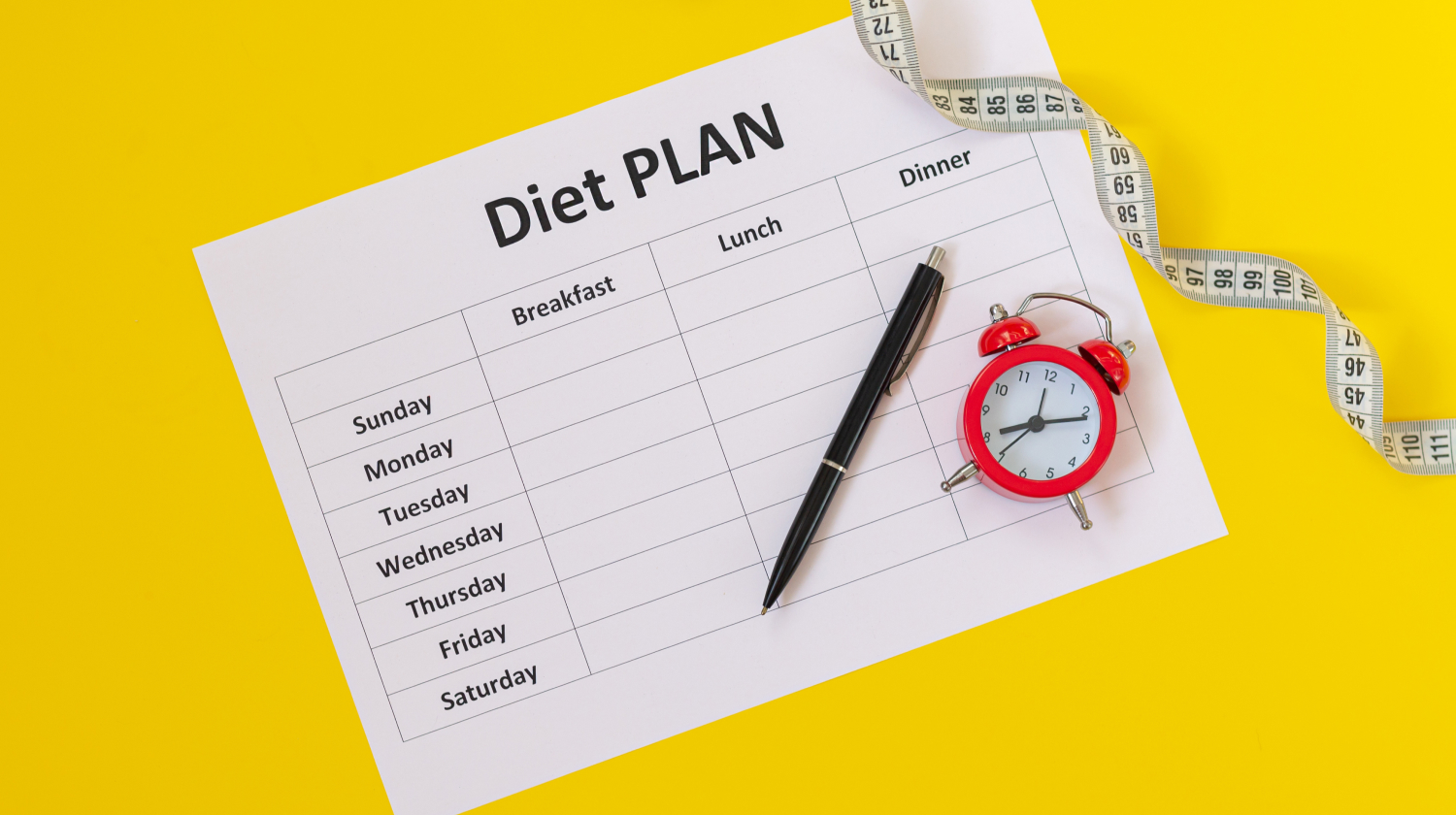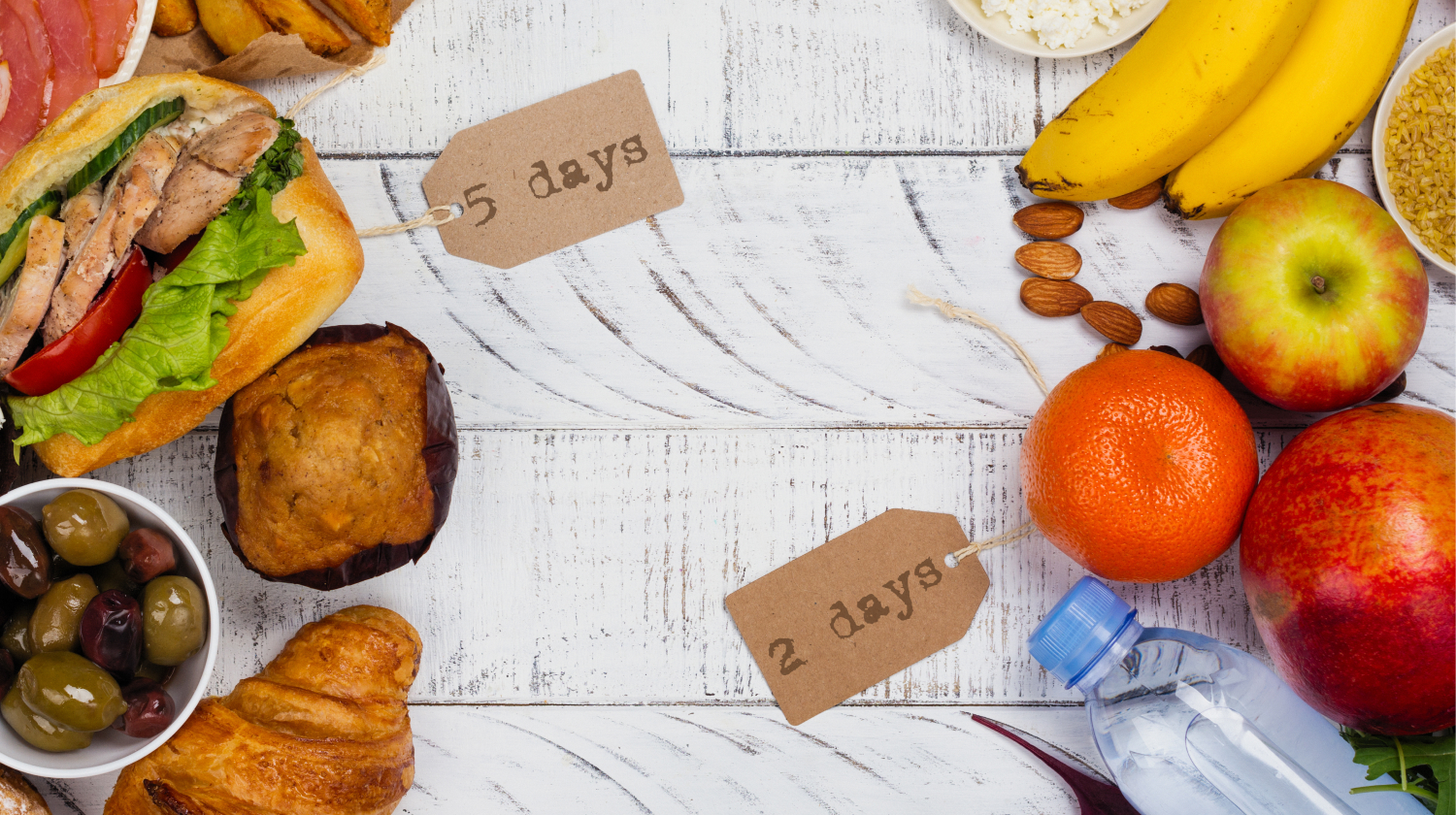 Expert's opinion
Expert's opinion
Expert's opinion
The article is a subjective view on this topic written by writers specializing in medical writing.
It may reflect on a personal journey surrounding struggles with an illness or medical condition, involve product comparisons, diet considerations, or other health-related opinions.
Although the view is entirely that of the writer, it is based on academic experiences and scientific research they have conducted; it is fact-checked by a team of degreed medical experts, and validated by sources attached to the article.
The numbers in parenthesis (1,2,3) will take you to clickable links to related scientific papers.
Intermittent Fasting For Women Over 40: A Complete Guide

Intermittent fasting is a popular method to lose weight among women, but many women over 40 might be doing it wrong, which could harm their long-term health.
In fact, the scientific benefits of intermittent fasting for women over 40 can be misleading, and the risks of intermittent fasting might even outweigh the benefits.
But first, what exactly is intermittent fasting? And how should intermittent fasting women over 40 do it safely?
What Is Intermittent Fasting?
Intermittent fasting, or IF, is a dietary pattern including regular, short-term fasting periods. Most of the time, you’ll eat normally, and, unlike most diets, you do not have to count calories or restrict certain foods.
The most common methods are daily 16-hour fasts, fasting on alternate days, and fasting two days weekly. The best one for you depends on your own lifestyle and goals.
Here are the most popular types of intermittent fasting for women over 40. However, as women over 40 are more susceptible to the impact of intermittent fasting on hormone balance, we sometimes recommended a modified version of the original fasting method.
Best Types Of Intermittent Fasting For Women Over 40
Time-Restricted Feeding

One of the most common intermittent fasting methods is called time-restricted feeding. This is when you eat within the same limited timeframe every day.
Your eating window is the time in which you eat every day, and it’s a personal choice. Most people eat within an eight-hour window and fast for the other 16 hours in each 24-hour cycle, also called the 16/8 method. For women over 40, we recommend extending the eating window and doing a 14-hour fast.
However, time-restricted feeding can get in the way of enjoying social eating events, so some people prefer to have normal eating days with the occasional stricter fasting day.
24-Hour Protocol

Another type of intermittent fasting involves eating normally on some days and restricting calorie intake on other days.
If you want to eat normally most of the time, you could follow the 24-hour protocol, which means doing a full fast for an entire 24-hour period. Fasting days can involve anything from zero to 25% of your normal calorie intake, and we recommend women over 40 go for the latter.
It’s up to you how often you do this, but most people choose to do it once monthly or weekly. For women over 40, we recommend a maximum of twice weekly.
Alternate-Day Fasting

If full 24-hour fasts are too much for you, or you want a more regular schedule, another popular method is alternate-day fasting.[1] This involves eating normally every other day and restricting calories to 20%-25% of your normal intake on alternate days.
However, fasting every other day can be tough, especially on the hormonal balance of women over 40, and some experts even say it might not be necessary. Enter the 5:2 diet.
The 5:2 Diet

Popularized by British medical doctor and journalist Michael Mosley, the 5:2 diet is an easier, safer version of the alternate-day fasting method. Because the positive effects are similar to doing regular full 24-hour fasts, it’s also called the ‘fasting-mimicking’ diet.
On the 5:2 diet, you’ll eat normally on five days of the week and restrict calorie intake to 500 calories or less on the other two non-consecutive days.
Benefits Of IF For Women After 40
People do intermittent fasting for its many claimed benefits, such as longevity, weight loss, and blood sugar balance. However, it’s important not to overstate the benefits of intermittent fasting,[1] particularly for older women.
So, which health benefits of intermittent fasting apply to women over 40?
Weight Loss
Many women start to struggle with slowing metabolism and weight gain in their 40s. But does IF work for older women?
A 2022 study, mainly consisting of overweight women aged between 34 to 48, found that eight weeks of alternate-day fasting is no more effective than standard calorie restriction[1] for weight loss.
But alternate-day fasting is hard to stick to. Another study — mainly comprising women with an average age of 44 years — shows that most people eat more than the recommended 25% of normal calories[2] on fasting days. Also, compared to a calorie-restricted diet, the fasters were less satisfied and were more likely to drop out of the study.
What about the 24-hour protocol or the 5:2 diet? Another study — again, mainly comprised of women with an average age of 50 — compared two calorie-matched intermittent fasting diets: one-day vs. two-day weekly fasts. They discovered that the two-day fasters had lower hunger levels and lost more weight.[3] However, this was not compared to standard calorie restriction.
So, if your goal is weight loss, the research suggests the best IF diet for the job is the 5:2 diet. However, as short-term intermittent fasting seems no better than calorie restriction for weight loss,[4] it makes more sense for women over 40 to lose weight by restricting calories.
Reduced Risk Of Chronic Health Conditions
In healthy overweight older women, intermittent fasting might reduce the risk of cardiovascular diseases[2] but doesn’t seem to affect blood pressure or overall cholesterol levels.
However, we cannot overstate the effects: IF did not work better than standard calorie restriction, suggesting that what matters most is weight loss. Indeed, one of the biggest predictors of better long-term health is healthy weight management.
Studies also suggest that intermittent fasting can improve insulin sensitivity,[5] reducing insulin resistance and the risk of metabolic diseases such as type 2 diabetes. However, this might only be true in men and younger women with polycystic ovarian syndrome.[6]
Other Benefits Of IF For Women
- Increased longevity.[7]
- Improved cognitive function[8] and mental health.
- Reduced inflammation[9] and oxidative stress.[10]
- Reduced risk of non-alcoholic fatty liver disease.[11]
- Improved symptoms of polycystic ovarian syndrome,[6] or PCOS, in younger women.
- Reduced gastrointestinal symptoms[12] with two-consecutive days of fasting per week. However, although we know fasting can significantly change the gut microbiome,[13] we don’t yet know whether the effects are good or bad overall.
Potential Side Effects Of IF For Women Over 40
Intermittent fasting might seem safe, but we don’t have much evidence for the long-term effects on health.[14] Changes occur in women over 40 that can be exacerbated by IF, such as a declining metabolism, loss of muscle mass, changes in hormones, and nutrition requirements.
Hormonal Changes
Women over 40 are already experiencing declining estrogen levels, increasing cortisol levels,[15] and changes in their menstrual cycle associated with menopause. Unfortunately, intermittent fasting might exacerbate these hormonal changes, increasing the risk of side effects such as perimenopause symptoms, amenorrhea,[16] mental health disorders, and low bone mineral density.[17]
Why? Because intermittent fasting can increase the risk of low-calorie intake and increase stress hormone levels, which signals the female body to reduce sex hormone production and shut down reproductive systems.[18] Great for improving chances of survival in a famine, but not so great for your long-term health.
To date, there has been no research into the effects of intermittent fasting on hormone levels in peri- or postmenopausal women.[19] Nevertheless, studies show that losing weight on a very low-calorie diet significantly reduces sex hormone levels[20] and increases insulin resistance.
Moreover, losing weight via intermittent fasting significantly reduces estrogen levels,[21] but this evidence is only in younger women.
Ensure you’re getting enough calories, protein, calcium, and vitamin D — all of which are important to the female body after 40.
Loss Of Lean Muscle Mass
Women over 40 naturally tend to start losing muscle, and one big risk of losing weight with IF is the loss of muscle rather than body fat. This slows metabolism, which can increase the risk of weight re-gain.
This is particularly a risk in normal-weight women, who can lose up to 30% of muscle mass[5] while intermittent fasting.
Keeping up with exercise and increasing protein intake might help prevent the loss of muscle during IF, but most of the evidence is in men or male animals. These studies suggest that resistance or endurance training alongside intermittent fasting can reduce fat mass[22] while maintaining lean muscle mass and improving sports performance.[23]
But, when it comes to women over 40, we need more evidence.[24] One study in active women found that the 16/8 method did not change fat mass or muscle mass[25] compared to a normal diet — as long as calorie and protein intake was matched.
The problem is that older women need more protein[26] than younger women, preferably consumed consistently throughout the day, to maintain muscle mass. This is hard to achieve whilst intermittent fasting.
If you do try intermittent fasting, track your calorie and protein intake, and aim to eat 1.2 grams of protein per kilogram[27] of body weight daily.
Worse Blood Sugar Control
Unfortunately, the beneficial effects of intermittent fasting on blood sugar balance might be overstated for women. While intermittent fasting seems to improve insulin sensitivity in men,[28] a study in women found that intermittent fasting actually triggers insulin resistance.[10]
This might be mitigated by following a low-carbohydrate intermittent fasting diet,[29] but, as both intermittent fasting and low-carbohydrate diets are difficult to maintain long-term, we do not recommend it.
Might Promote Disordered Eating
Eating disorders are more common among women,[30] and there’s a risk that intermittent fasting can be used to increase restrictive eating behaviors in those with eating disorders.
Studies suggest that short-term intermittent fasting reduced binge eating but did not change purging behavior,[31] meaning that doing intermittent fasting longer-term might be harmful in those with existing eating disorders.
Side Effects On Fasting Days
Aside from the longer-term side effects above, short-term side effects on fasting[31] days might include
- Bad breath.
- Headaches.
- Mood swings.
- Lack of energy.
- Dizziness.
- Constipation.
Is Intermittent Fasting Healthy For Women Over 40?
Many women try intermittent fasting for health benefits, including weight loss and a lower risk of metabolic diseases. However, some evidence suggests it could have a negative impact on hormone balance, fertility, blood sugar balance, and muscle mass in women over 40.
Final Thought
Intermittent fasting is a lifestyle involving cycles of normal eating and periods of fasting.
Studies to date suggest that intermittent fasting does not have many health benefits over standard calorie restriction and might even have more risks for women over 40 compared to men or younger women.
If you want to lose weight, standard calorie restriction might be safer and more effective. If you do try intermittent fasting, monitor your health with your healthcare provider.
+ 31 sources
Health Canal avoids using tertiary references. We have strict sourcing guidelines and rely on peer-reviewed studies, academic researches from medical associations and institutions. To ensure the accuracy of articles in Health Canal, you can read more about the editorial process here
- Kucuk, B. and Berg, R.C. (2022). Alternate day fasting on subjective feelings of appetite and body weight for adults with overweight or obesity: a systematic review. Journal of Nutritional Science, [online] 11. doi:10.1017/jns.2022.90.
- Trepanowski, J.F., Kroeger, C.M., Barnosky, A., Klempel, M.C., Bhutani, S., Hoddy, K.K., Gabel, K., Freels, S., Rigdon, J., Rood, J., Ravussin, E. and Varady, K.A. (2017). Effect of Alternate-Day Fasting on Weight Loss, Weight Maintenance, and Cardioprotection Among Metabolically Healthy Obese Adults. JAMA Internal Medicine, [online] 177(7), p.930. doi:10.1001/jamainternmed.2017.0936.
- Arciero, P.J., Arciero, K.M., Poe, M., Mohr, A.E., Ives, S.J., Arciero, A., Boyce, M., Zhang, J., Haas, M., Valdez, E., Corbet, D., Judd, K., Smith, A., Furlong, O., Wahler, M. and Gumpricht, E. (2022). Intermittent fasting two days versus one day per week, matched for total energy intake and expenditure, increases weight loss in overweight/obese men and women. Nutrition Journal, [online] 21(1). doi:10.1186/s12937-022-00790-0.
- Ye, Y.-F., Zhang, M.-X., Lin, Z. and Tang, L. (2022). Is Intermittent Fasting Better Than Continuous Energy Restriction for Adults with Overweight and Obesity? Diabetes, Metabolic Syndrome and Obesity: Targets and Therapy, [online] Volume 15, pp.2813–2826. doi:10.2147/dmso.s376409.
- Mattson, M.P., Longo, V.D. and Harvie, M. (2017). Impact of intermittent fasting on health and disease processes. Ageing Research Reviews, [online] 39, pp.46–58. doi:10.1016/j.arr.2016.10.005.
- Li, C., Xing, C., Zhang, J., Zhao, H., Shi, W. and He, B. (2021). Eight-hour time-restricted feeding improves endocrine and metabolic profiles in women with anovulatory polycystic ovary syndrome. Journal of Translational Medicine, [online] 19(1). doi:10.1186/s12967-021-02817-2.
- Dorling, J.L., Martin, C.K. and Redman, L.M. (2020). Calorie restriction for enhanced longevity: The role of novel dietary strategies in the present obesogenic environment. Ageing Research Reviews, [online] 64, p.101038. doi:10.1016/j.arr.2020.101038.
- Martin, B., Pearson, M., Kebejian, L., Golden, E., Keselman, A., Bender, M., Carlson, O., Egan, J., Ladenheim, B., Cadet, J.-L., Becker, K.G., Wood, W., Duffy, K., Vinayakumar, P., Maudsley, S. and Mattson, M.P. (2007). Sex-Dependent Metabolic, Neuroendocrine, and Cognitive Responses to Dietary Energy Restriction and Excess. Endocrinology, [online] 148(9), pp.4318–4333. doi:10.1210/en.2007-0161.
- Parveen, S. and Alhazmi, Y.A. (2022). Impact of Intermittent Fasting on Metabolic Syndrome and Periodontal Disease—A Suggested Preventive Strategy to Reduce the Public Health Burden. International Journal of Environmental Research and Public Health, [online] 19(21), p.14536. doi:10.3390/ijerph192114536.
- Liu, B., Hutchison, A.T., Thompson, C.H., Lange, K., Wittert, G.A. and Heilbronn, L.K. (2020). Effects of Intermittent Fasting or Calorie Restriction on Markers of Lipid Metabolism in Human Skeletal Muscle. The Journal of Clinical Endocrinology & Metabolism, [online] 106(3), pp.e1389–e1399. doi:10.1210/clinem/dgaa707.
- Ezpeleta, M., Gabel, K., Cienfuegos, S., Kalam, F., Lin, S., Pavlou, V., Song, Z., Haus, J.M., Koppe, S., Alexandria, S.J., Tussing-Humphreys, L. and Varady, K.A. (2023). Effect of alternate day fasting combined with aerobic exercise on non-alcoholic fatty liver disease: A randomized controlled trial. Cell Metabolism, [online] 35(1), pp.56-70.e3. doi:10.1016/j.cmet.2022.12.001.
- Mohr, A.E., Jasbi, P., Bowes, D.A., Dirks, B., Whisner, C.M., Arciero, K.M., Poe, M., Gu, H., Gumpricht, E., Sweazea, K.L. and Arciero, P.J. (2022). Exploratory analysis of one versus two-day intermittent fasting protocols on the gut microbiome and plasma metabolome in adults with overweight/obesity. Frontiers in Nutrition, [online] 9. doi:10.3389/fnut.2022.1036080.
- Mohr, A.E., Gumpricht, E., Sears, D.D. and Sweazea, K.L. (2021). Recent advances and health implications of dietary fasting regimens on the gut microbiome. American Journal of Physiology-Gastrointestinal and Liver Physiology, [online] 320(5), pp.G847–G863. doi:10.1152/ajpgi.00475.2020.
- Horne, B.D., Muhlestein, J.B. and Anderson, J.L. (2015). Health effects of intermittent fasting: hormesis or harm? A systematic review. The American Journal of Clinical Nutrition, [online] 102(2), pp.464–470. doi:10.3945/ajcn.115.109553.
- Sauer, T., Tottenham, L.S., Ethier, A. and Gordon, J.L. (2020). Perimenopausal vasomotor symptoms and the cortisol awakening response. Menopause, [online] 27(11), pp.1322–1327. doi:10.1097/gme.0000000000001588.
- Harvie, M.N., Pegington, M., Mattson, M.P., Frystyk, J., Dillon, B., Evans, G., Cuzick, J., Jebb, S.A., Martin, B., Cutler, R.G., Son, T.G., Maudsley, S., Carlson, O.D., Egan, J.M., Flyvbjerg, A. and Howell, A. (2010). The effects of intermittent or continuous energy restriction on weight loss and metabolic disease risk markers: a randomized trial in young overweight women. International Journal of Obesity, [online] 35(5), pp.714–727. doi:10.1038/ijo.2010.171.
- Indirli, R., Lanzi, V., Mantovani, G., Arosio, M. and Ferrante, E. (2022). Bone health in functional hypothalamic amenorrhea: What the endocrinologist needs to know. Frontiers in Endocrinology, [online] 13. doi:10.3389/fendo.2022.946695.
- Meczekalski, B., Katulski, K., Czyzyk, A., Podfigurna-Stopa, A. and Maciejewska-Jeske, M. (2014). Functional hypothalamic amenorrhea and its influence on women’s health. Journal of Endocrinological Investigation, [online] 37(11), pp.1049–1056. doi:10.1007/s40618-014-0169-3.
- Cienfuegos, S., Corapi, S., Gabel, K., Ezpeleta, M., Kalam, F., Lin, S., Pavlou, V. and Varady, K.A. (2022). Effect of Intermittent Fasting on Reproductive Hormone Levels in Females and Males: A Review of Human Trials. Nutrients, [online] 14(11), p.2343. doi:10.3390/nu14112343.
- BützowT.L., Lehtovirta, M., Siegberg, R., Hovatta, O., Koistinen, R., SeppäläM. and Apter, D. (2000). The Decrease in Luteinizing Hormone Secretion in Response to Weight Reduction Is Inversely Related to the Severity of Insulin Resistance in Overweight Women*. The Journal of Clinical Endocrinology & Metabolism, [online] 85(9), pp.3271–3275. doi:10.1210/jcem.85.9.6821.
- Stolzenberg-Solomon, R.Z., Falk, R.T., Stanczyk, F., Hoover, R.N., Appel, L.J., Ard, J.D., Batch, B.C., Coughlin, J., Han, X., Lien, L.F., Pinkston, C.M., Svetkey, L.P. and Katki, H.A. (2012). Sex hormone changes during weight loss and maintenance in overweight and obese postmenopausal African-American and non-African-American women. Breast Cancer Research, [online] 14(5). doi:10.1186/bcr3346.
- Moro, T., Tinsley, G., Bianco, A., Marcolin, G., Pacelli, Q.F., Battaglia, G., Palma, A., Gentil, P., Neri, M. and Paoli, A. (2016). Effects of eight weeks of time-restricted feeding (16/8) on basal metabolism, maximal strength, body composition, inflammation, and cardiovascular risk factors in resistance-trained males. Journal of Translational Medicine, [online] 14(1). doi:10.1186/s12967-016-1044-0.
- Marosi, K., Moehl, K., Navas‐Enamorado, I., Mitchell, S.J., Zhang, Y., Lehrmann, E., Aon, M.A., Cortassa, S., Becker, K.G. and Mattson, M.P. (2018). Metabolic and molecular framework for the enhancement of endurance by intermittent food deprivation. The FASEB Journal, [online] 32(7), pp.3844–3858. doi:10.1096/fj.201701378rr.
- Sandoval, C., Santibañez, S. and Villagrán, F. (2021). Effectiveness of intermittent fasting to potentiate weight loss or muscle gains in humans younger than 60 years old: a systematic review. International Journal of Food Sciences and Nutrition, [online] 72(6), pp.734–745. doi:10.1080/09637486.2020.1868412.
- Tinsley, G.M., Moore, M.L., Graybeal, A.J., Paoli, A., Kim, Y., Gonzales, J.U., Harry, J.R., VanDusseldorp, T.A., Kennedy, D.N. and Cruz, M.R. (2019). Time-restricted feeding plus resistance training in active females: a randomized trial. The American Journal of Clinical Nutrition, [online] 110(3), pp.628–640. doi:10.1093/ajcn/nqz126.
- Johnson, N.R., Kotarsky, C.J., Mahoney, S.J., Sawyer, B.C., Stone, K.A., Byun, W., Hackney, K.J., Mitchell, S. and Stastny, S.N. (2022). Evenness of Dietary Protein Intake Is Positively Associated with Lean Mass and Strength in Healthy Women. Nutrition and Metabolic Insights, [online] 15, p.117863882211018. doi:10.1177/11786388221101829.
- Harvie, M., Wright, C., Pegington, M., McMullan, D., Mitchell, E., Martin, B., Cutler, R.G., Evans, G., Whiteside, S., Maudsley, S., Camandola, S., Wang, R., Carlson, O.D., Egan, J.M., Mattson, M.P. and Howell, A. (2013). The effect of intermittent energy and carbohydrate restrictionv. daily energy restriction on weight loss and metabolic disease risk markers in overweight women. British Journal of Nutrition, [online] 110(8), pp.1534–1547. doi:10.1017/s0007114513000792.
- Ingersen, A., Helset, H.R., Calov, M., Chabanova, E., Harreskov, E.G., Jensen, C., Hansen, C.N., Prats, C., Helge, J.W., Larsen, S. and Dela, F. (2022). Metabolic effects of alternate-day fasting in males with obesity with or without type 2 diabetes. Frontiers in Physiology, [online] 13. doi:10.3389/fphys.2022.1061063.
- Arbour, M.W., Stec, M., Walker, K.C. and Wika, J.C. (2021). Clinical Implications for Women of a Low-Carbohydrate or Ketogenic Diet With Intermittent Fasting. Nursing for Women’s Health, [online] 25(2), pp.139–151. doi:10.1016/j.nwh.2021.01.009.
- Walker, M., Thornton, L., De Choudhury, M., Teevan, J., Bulik, C.M., Levinson, C.A. and Zerwas, S. (2015). Facebook Use and Disordered Eating in College-Aged Women. Journal of Adolescent Health, [online] 57(2), pp.157–163. doi:10.1016/j.jadohealth.2015.04.026.
- Hoddy, K.K., Kroeger, C.M., Trepanowski, J.F., Barnosky, A.R., Bhutani, S. and Varady, K.A. (2015). Safety of alternate day fasting and effect on disordered eating behaviors. Nutrition Journal, [online] 14(1). doi:10.1186/s12937-015-0029-9.



